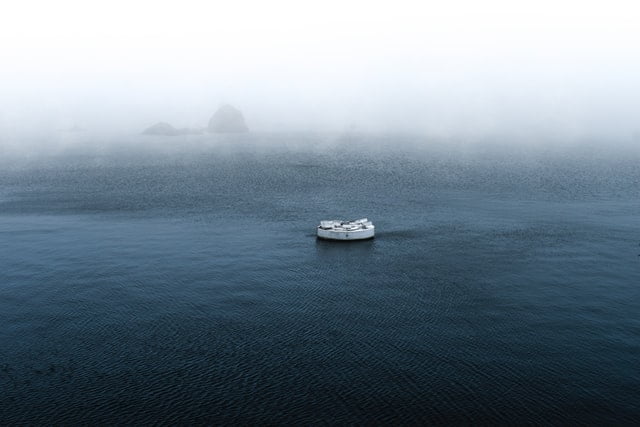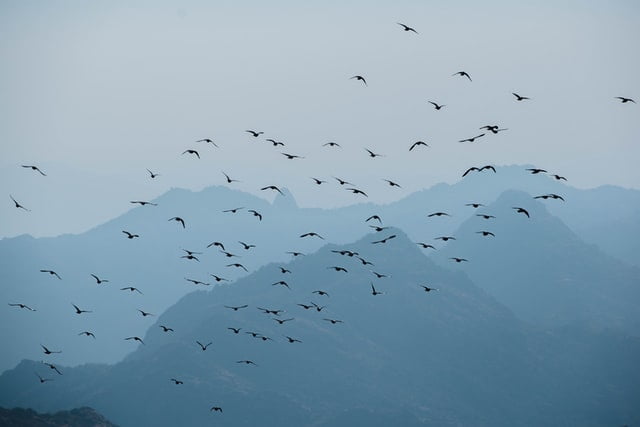Mount Abu, Rajasthan’s only hill station, is a picturesque hill station. Abu acts as a green oasis among the state’s arid plains. And because of these reasons, people from Rajasthan and Gujarat love spending their weekends here. Furthermore, the top places to visit in Mount Abu are a combination of man-made beauty, perched hills, lush vegetation, incredible architectural wonders, and panoramic beauty.
About Rajasthan’s Mount Abu

Mount Abu, the hill retreat, settles at the southernmost extremity of the Aravali range. It lies on the border of Rajasthan and Gujarat in the Sirohi District. Abu gets its fresh cold environment from the lush vegetation that covers the whole hillside. Abu is actually a plateau at an elevation of 1200 meters. Furthermore, Mount Abu is the highest point between the northern Himalayan range and the southern Nilgiri Mountains.
Mount Abu, according to mythology, represents the Himalayan’s son. Many sages and seers, including the renowned sage Vashistha, sought refuge on Mount Abu. Now, it is a Jain pilgrimage site. Abu is around a lake, and woody hills surround it. According to legend, Mount Abu gets its name after Arbuda, a serpent who descended to save Lord Shiva‘s bull, Nandi.
Rajasthan’s Mount Abu is famous for its natural implication. That includes massive boulders, beautiful lakes, and a pleasant climate, making it an ideal location in Rajasthan’s arid desert. It is notable for the famous Dilwara temples and many archaeological relics. You will also find many exciting treks and picnic sites nearby. As well as royal retreats of various Rajputana families and some Raj period or relics.
How to Reach Mount Abu?
By Air: The nearest airport is in Udaipur City, which is 135 km away. Udaipur is easily accessible through flights from Delhi, Jaipur, and Mumbai.
By Train: The nearest railway station is Abu Road, around 22 km from Mount Abu. This station connects Ahmadabad, Jaipur, Mumbai, and all other major cities.
By Road: Road network of the whole Rajasthan state is excellent. Rajasthan roads’ deluxe buses run at regular intervals from Abu to all important cities.
Best Time to Visit Mount Abu

Summer (March-June): Rajashtan is Rajasthan and so is its warmth. The air temperature during summer will be 31-36 degrees Celsius. This warm season will not let you enjoy as much as the winter will. Though this is a good time to save money and avoid crowds.
Monsoon (July-October): Mount Abu doesn’t receive heavy rain showers. The air temperature usually remains between 28-34 degrees Celsius. The weather will cool with fresh and clean air. Nature will be at its best during the monsoon but some activities like boating at Nakki lake will be closed. And you may have to cancel your plans anytime.
Winter (November-February): The best time to visit Mount Abu is during winter. The air temperature will be between 16-22 degrees Celsius. The weather will chill, dry, and just amazing. The Winter season will be perfect for sightseeing, adventure, and other activities. But winter being the peak season will offer you a lot of crowds, so be prepared 😉
NOTE: Book your tickets, hotel, and other necessary things like bikes/scooter/cab early. Be ready with a plan and start your day early to cope up with crowd. Pack woolen clothes to fight chill weather (especially during night).
Top 15 Places to Visit in Mount Abu
Mount Abu, an ideal location in Rajasthan’s arid desert, attracts tourists due to many reasons. Reasons like glittery lakes, mountain top temples, and structural beauty with a cool and fresh climate. Apart from the best tourist attractions, it also opens its doors for treks, hikes, and adventure activities.
The most famous and top places to visit in Mount Abu mentioned in this travellingortraveling blog are Nakki Lake, Toad Rock, Dilwara Jain Temples, Sunset Point, Honeymoon Point, Gaumukh Temple, Shri Raghunathji Temple, Adhar Devi Temple, Trevor’s Tank, Guru Shikhar (Highest peak), Om Shanti Bhawan, Peace Park, Mount Abu Wildlife Sanctuary, Thrill Zone Adventure Park & Camps, and Achalgarh Fort.
#1 Nakki Lake

Nakki Lake is a beautiful lake that lies among hills. According to beliefs, it is chiseled out by the Gods with their nails. It’s a famous boating destination and India’s only man-made lake at 1200 meters above sea level. There are numerous points of interest in the surrounding hills.
#2 Toad Rock

Mount Abu’s Toad Rock, adjacent to Nakki Lake, is a beautiful spot to visit. The panorama that explodes upon you at Toad Rock wonderfully reflects all of Mount Abu’s natural splendor. This rock is a strangely shaped high stone that rests on the lake’s bank, seeming as if it may dive into its dappled waters at any moment.
This place will appeal to photographers due to its picturesque qualities. Toad Rock, despite its simplicity, is justifiably one of the most popular places to visit in Mount Abu.
#3 Dilwara Jain Temple

Dilwara Jain Temples are exquisitely carved and dedicates to the Jain Tirthankaras. These were erected between the 11th and 13th centuries A.D. The earliest of these is the Vimal Vasahi temple, which worships the first Tirthankara. It is a remarkable example of temple construction, built-in 1031 A.D. (by Vimal Shah, a trader, and representative of the then Gujarat king). The central shrine has a reflection of Rishabhdev and a massive courtyard with 52 tiny shrines, each housing a magnificent figure of a Tirthankara. The courtyard entrance has 48 lovely and sophisticated carved pillars.
The Lun Vasahi Temple dedicates to the 22nd Tirthankaras-Neminath, was erected in 1231 A.D. by two brothers from the Porwal Jain sect, Vastupal, and Tejpal, both Ministers of Raja Vir Dhawal, a king of Gujarat. The temple is a superb example of excellent craftsmanship, with door casings, pillars, and sculptures on the entrances.
#4 Sunset Point

Being a sunset lover, I think this is one of the best places to visit in Mount Abu. Sunset point lies South-west of Nakki Lake. Here the sun gradually drowns itself in the blue sky between two mountain peaks. At this location, steps lead up to a high terrace with an awe-inspiring view of the setting sun.
#5 Honeymoon Point

Honeymoon Point or Andra Point is a popular destination (especially for couples). It offers a beautiful view of the lush green plains and valleys. The early evening hours are when the site is at its most attractive.
#6 Gaumukh Temple

Gaumukh Temple is a Hindu temple in Mount Abu. The word Gaumukh means the face of a cow (“gau” means cow, and “mukh” means face). The shrine gets its name from a natural spring that runs all the way through a carved cow’s head. The sage Vashishtha’s famous “yagna” was held here.
Against the picturesque background, a wonderfully carved hill temple of Arbuada-the mighty serpent stands. The magnificent marble figure of Nandi, the celestial bull saved by Arbuada, lies nearby.
#7 Shri Raghunathji Temple

The Raghunath temple is located close to Nakki Lake. It was erected in the 14th century and, is a popular pilgrimage site. Shri Raghunath Ji, the avatar of Lord Vishnu, is worshipped in the temple. And according to their beliefs, he protects his devotees from all-natural disasters. The Vaishnavaites and travelers with a religious inclination pay a visit to the temple. Furthermore, the temple is said to provide relief from life’s aches and pains.
#8 Adhar Devi Temple

Adhar Devi Temple or Arbuda Devi Temple settles atop a cliff in a cave. The temple dedicates to Goddess Durga and is 3 km from Mount Abu. It is one of the most important religious sites in the hill town. A visit to the Adhar Devi Temple necessitates climbing 365 high stairs. But the effort is well worth it as it offers a bird’s-eye view of Mount Abu.
The temple is built out of a huge rock and visitors must bend and crawl to access the interior shrine. During Navratri (a nine-day Hindu festival), crowds of Hindu pilgrims go to the temple and is celebrated with zeal/ full gusto.
#9 Trevor’s Tank

Trevor’s tank gets its name from the British engineer. It nestles in the heavily forested hills of the Aravali Ranges and is a haven for bird watchers. A large number of beautiful birds are present here. Pheasants, peacocks, and partridges are the most significant.
#10 Guru Shikhar

Guru Shikhar, Mount Abu’s highest peak, is one of the most beautiful places. The temple erected atop this summit exudes a sense of calm. With only a small piece of pink poking out of an otherwise basic white chalk structure, the temple seemed like something out of a fairy tale.
#11 Om Shanti Bhawan

Om Shanti Bhawan, or the Universal Peace Hall, lies in the center of Abu. It’s a gorgeous corridor for gatherings, with enough room for 5,000 people to sit comfortably. In addition to this, an interpretation office in 16 dialects is available at all times. It’s a no-reservation traveler spot. Every day, about 8,000 people come to view it. This is a top Mount Abu tourist attraction.
Here, on a massive scale, consistently meaningful meetings are organized. It’s possible to reach Rajyoga Education’s extraordinary offices for Indians as well as distant brothers and sisters from this location. Students may take classes that focus on characteristics and otherworldliness.
#12 Peace Park

The Brahma Kumaris Peace Park is perfect and serene, an indigenous ecosystem where peace and entertainment coexist. The recreation area is between two prominent Aravali peaks — Guru Shikhar and Achal Garh — on the journey’s major route. Around 8 km from the Brahma Kumaris base camp on Mount Abu lies the Peace Park, a desert spring of common excellence.
Brahma Kumars and Kumaris who enjoy welcoming a large number of visitors regularly lovingly take care of this location. Guests can see a short video clip that highlights the inherent grandeur of the human spirit and interesting notions associated with Rajyoga contemplation in addition to taking a guided tour of the leisure facility.
#13 Mount Abu Wildlife Sanctuary

In the Mount Abu mountains lies the Mount Abu Wildlife Sanctuary. While many people come here just for sightseeing and vantage points, the majority come to see the wildlife and avian residents. The Mount Abu Wildlife Sanctuary stretches for around 7 km and is just 300 m wide at its narrowest point. Taking a long walk down The Mount Abu Wildlife Sanctuary will not cause you to miss anything.
Flower splendor abounds at the Mount Abu Wildlife Sanctuary in the Indian state of Rajasthan. This wildlife Sanctuary has 449 genera and 820 species of plants from 112 different plant families. Furthermore, Mount Abu Wildlife Sanctuary has a large collection of orchids.
#14 Thrill Zone Adventure Park & Camps

You’ll be astonished by the sheer number of fascinating and exhilarating games and daring activities at Thrill Zone Adventure Park. Here participants immerse in a stimulating environment full of energy and passion. Numerous sports are present around the area such as bungee jumping and zip-lining as well as zip bikes and ATVs.
Thrill Zone Adventure Park is the best place to go if you’re feeling adventurous and in need of a getaway.
#15 Achalgarh Fort

The Achalgarh Fort lies at a distance of 8 km from Rajasthan’s Mount Abu. Achalgarh Fort is a medieval landmark of Mt Abu, with massive battlemented walls and a location atop a mountain summit giving magnificent views. Fort was commissioned by Rana Kumbha, who was responsible for hundreds of huge castles in southern Rajasthan.
The 10-minute trek to the sculpted Jain temples is well worth it for the scenery and art. Just below the route lies the Achleshwar temple. The temple has a Nandi that people believe is made of Panchadattu (five metals); gold, silver, copper, brass, and zinc, and weighs more than 4 tonnes.
And the Mandakini lake, surrounded by rocky hills and adorned with pictures of a Rajput ruler and buffaloes, lies nearby. Legend has it that the tank was filled with ghee and was a drinking spot for demons masquerading as buffaloes until they were shot down by Raja Adi Pal.
I think the reason behind the evergreen tourism of Mount Abu is its weather and numerous yet unique tourist attractions. As these places to visit in Mount Abu offer natural lakes, man-made ancient temples, charming panorama, and adventure that may cheer anyone. So, in the end, I would like to wish you a happy and beautiful journey. Stay safe and let the adventure begin 😉

